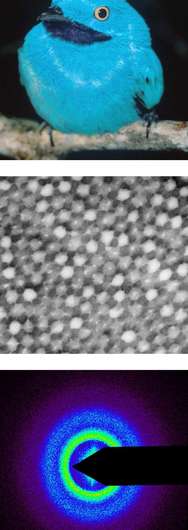Seven things you may not know about X-rays

1. X-rays are created by radiation coming from electrons.
X-rays are a type of light. When they've been excited, atoms emit packages of energy called photons. These make up every kind of light. X-rays are particularly energetic photons that are emitted by electrons outside the nucleus.
2. X-rays are used to look at especially tiny structures because they have a shorter wavelength than visible light.
The shortest wavelengths of visible light—what we see as violet—measure somewhere around 400 nanometers. By comparison, soft X-rays have wavelengths around one nanometer and hard X-rays have wavelengths of just a fraction of a nanometer. (Your fingernails grow about one nanometer per second.) It's impossible to see structures smaller than the wavelength of whichever form of light that's used, so scientists need to use short-wavelength pulses to analyze materials at the atomic scale.
3. There's a big difference between "soft" and "hard" X-rays.
Soft X-rays carry far less energy than hard X-rays, and are for this reason more easily absorbed by air and especially by other mediums. In water, the majority of soft X-ray photons will be absorbed before they have travelled even a millionth of a meter. Doctors and scientists use hard X-rays to look at broken bones or to investigate the atomic-level properties of solid materials.
4. X-rays were discovered by accident.
X-rays, originally named Röntgen rays, were discovered in 1895 by German physicist Wilhelm Röntgen. Röntgen had been doing experiments with cathode rays—streams of electrons in vacuum tubes. He had prepared a glass cathode ray tube completely covered with black cardboard, and noticed that even though the cardboard completely covered the tube, a glow still appeared on a fluorescent screen several feet away. After Röntgen prepared one of the earliest X-ray images of the bones in the hand of his wife, she remarked: "Now I have seen my death!"
5. X-rays were used to discover the double helical structure of DNA.
Although James Watson and Francis Crick are typically credited with the discovery of the structure of DNA, their breakthrough would not have been possible without the X-ray crystallography performed by chemist Rosalind Franklin. X-ray crystallography involves striking a crystal's surface with X-rays and then looking at the "scattering" pattern generated as a result. By working backwards mathematically, scientists can reconstruct the structure of small molecules from these intricate patterns.
6. Particularly powerful X-rays are produced by large particle accelerators that can stretch for miles.
The brightest X-rays that U.S. scientists use today for their experiments are produced at large "light sources" located at national laboratories. Argonne's Advanced Photon Source represents one example of a synchrotron light source—a large ring that uses magnets to keep electrons travelling at close to the speed of light around a kilometer-long ring. As the electrons travel around the ring, they emit energy in the form of brilliant, high-energy X-rays.
7. It's possible to combine X-rays with microscopes.
X-ray microscopy does not really look a lot like the optical microscopy most of us are familiar with from high school. Because X-rays are invisible to the human eye, scientists using an X-ray microscope expose film or use an X-ray detector to absorb X-rays that pass through samples. Then they analyze the results from these exposures to create an image.
Provided by Argonne National Laboratory


















